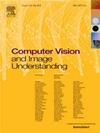Adversarial Style Mixup and Improved Temporal Alignment for Cross-Domain Few-Shot Action Recognition
IF 4.3
3区 计算机科学
Q2 COMPUTER SCIENCE, ARTIFICIAL INTELLIGENCE
引用次数: 0
Abstract
Cross-Domain Few-Shot Action Recognition (CDFSAR) aims at transferring knowledge from base classes to novel ones with limited labeled data, under distribution shift between base (source domain) and novel (target domain) classes. This paper addresses the issues of insufficient style coverage for the target domain and potential temporal misalignment with chronological order in existing methods. To mitigate distribution shifts across domains, we propose an Adversarial Style Mixup (ASM) module, which enriches the diversity of style distributions covering the target domain. ASM mixes up source and target domain styles through statistical means and variances, with the adversarially learned mixup ratio and style noise. On the other hand, we design an Improved Temporal Alignment (ITA) module to address the issue of temporal misalignment between videos. In the proposed ITA, keyframes are extracted as priors for better temporal alignment with a temporal mixer to reduce the misalignment noise. Extensive experiments on video action recognition datasets demonstrates the superiority of our method compared with the state of the arts for the challenging problem of CDFSAR. Ablation study validates that both the proposed ASM and ITA modules contribute to performance improvement by style distribution expansion and keyframe-based temporal alignment.
对抗风格混合和改进的跨域少射动作识别的时间对齐
跨域单次动作识别(CDFSAR)的目的是在基本类(源领域)和新类(目标领域)之间的分布转移下,在有限的标记数据下,将知识从基本类转移到新类。本文解决了现有方法中对目标域的风格覆盖不足以及与时间顺序的潜在时间偏差的问题。为了减轻跨领域的分布变化,我们提出了一个对抗风格混合(ASM)模块,它丰富了覆盖目标领域的风格分布的多样性。ASM通过统计方法和方差来混合源域和目标域的风格,并使用对抗性学习的混合比率和风格噪声。另一方面,我们设计了一个改进的时间对齐(ITA)模块来解决视频之间的时间不对齐问题。在所提出的ITA中,提取关键帧作为先验,使用时间混合器进行更好的时间对齐,以减少不对齐噪声。在视频动作识别数据集上的大量实验证明了我们的方法在CDFSAR挑战性问题上的优越性。消融研究验证了所提出的ASM和ITA模块通过样式分布扩展和基于关键帧的时间对齐来提高性能。
本文章由计算机程序翻译,如有差异,请以英文原文为准。
求助全文
约1分钟内获得全文
求助全文
来源期刊

Computer Vision and Image Understanding
工程技术-工程:电子与电气
CiteScore
7.80
自引率
4.40%
发文量
112
审稿时长
79 days
期刊介绍:
The central focus of this journal is the computer analysis of pictorial information. Computer Vision and Image Understanding publishes papers covering all aspects of image analysis from the low-level, iconic processes of early vision to the high-level, symbolic processes of recognition and interpretation. A wide range of topics in the image understanding area is covered, including papers offering insights that differ from predominant views.
Research Areas Include:
• Theory
• Early vision
• Data structures and representations
• Shape
• Range
• Motion
• Matching and recognition
• Architecture and languages
• Vision systems
 求助内容:
求助内容: 应助结果提醒方式:
应助结果提醒方式:


